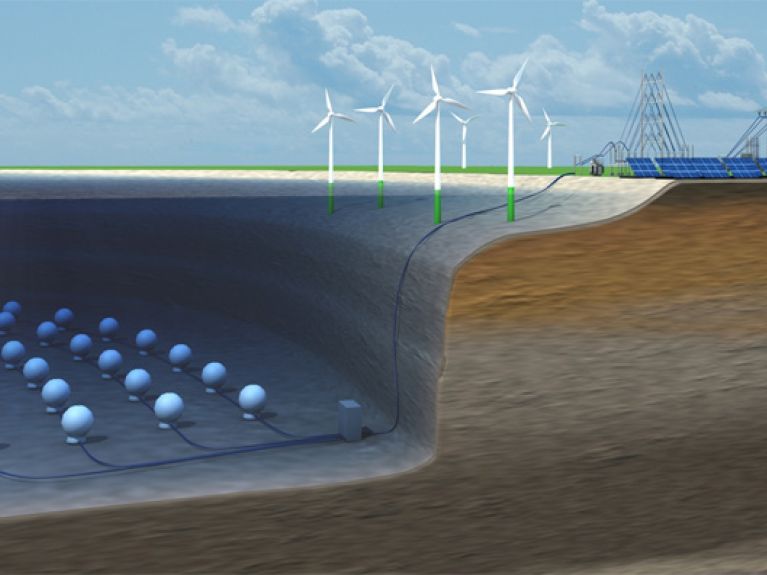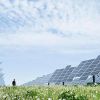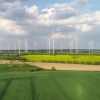Wind energy batteries on the seabed
German scientists want to store and release offshore wind energy with a novel pumped storage concept.

Some people have nicknamed it the “sea egg”. The official name of the project is StEnSea: Storing Energy at Sea. It is basically a hollow concrete sphere on the seabed designed to store excess energy and release it again as required. What scientists at the Fraunhofer Institute for Wind Energy and Energy System Technology in Kassel have been working out aims to solve the basic problem of offshore wind energy as a reliable supply of power: wind does not blow at a constant speed, sometimes it is stormy and sometimes there is a lull. When it is stormy the rotor blades in the wind farms often stand still to prevent the grids from overloading. In addition to this, people’s energy consumption varies greatly between day and night. Pumped storage power plants that are able to accommodate the excesses require a large amount of space and a sufficient difference in elevation. This is why they are found mainly in the south of the country, in the Alps and the low mountain ranges, whereas the major offshore wind parks are in the north.
Transferring the principle of pumped storage power plants from land to sea
Ten engineers headed by the physicist Jochen Bard are working in Kassel to discover how to store the electricity generated offshore or near the coast with the aid of gigantic hollow spheres made of concrete. They are about 30 metres in diameter with walls around three metres thick. The idea is to anchor them 700 metres deep down on the seabed. In a similar way to that of pumped storage power plants on land, this method utilises the energy of flowing water. But instead of using huge storage basins, the hollow spheres on the seabed will serve as water storage vessels. The company Hochtief is the industrial enterprise involved in the project.
The sphere is flooded whenever electrical power is needed. As the water streams in it drives a turbine that produces electricity which is fed into the grid. If there is an energy surplus in the grid, the water is pumped out of the sphere and the energy is stored until it is released again the next time the sphere is filled. In a model, 200 such spheres each drive a turbine. The individual spheres achieve 20 megawatts each. This means that a park with 200 spheres on the seabed would make four gigawatts available within a few hours for storage or equalisation.
The project is being funded by the Federal Ministry for the Environment, Nature Conservation and Nuclear Safety until spring 2017. A four-week miniature model test with spheres measuring just three metres in diameter is due to start at Lake Constance in autumn 2016. Mr Bard says that the question of when or whether the first spheres will be lowered into the sea depends largely on how quickly renewable energies are developed in other countries as well: “The project is more significant as an export technology, because we don’t have the necessary depth in the North Sea.” The average depth there is only 90 metres, with just one narrow trench off the coast of Norway that is 725 metres deep. The Norwegian Trench would be an ideal spot for the “sea eggs”.

